Lenovo Legion Go S with Windows
The Windows-powered Legion Go S isn’t a total bust from Lenovo. The display is great, and so are the speakers. There are also some nice software features, including fully customizable buttons. However, there are so many confusing choices here that ruin the experience: the quad-core Ryzen Z2 Go chipset leaves much to be desired, the whole thing is too heavy, there’s no “gotta have it” feature, and poor hardware decisions (like the tiniest trackpad on Earth) make it cumbersome and mediocre to actually use. When you add in the sky-high asking price, it’s hard for me to recommend this to anyone when more powerful and/or more user-friendly options exist for less cash.
When the Steam Deck launched in 2022, it was hardly the first PC gaming handheld to hit the market. The Nintendo Switch had already categorically proven that large-screened handheld gaming systems were what people wanted five years prior, and other manufacturers had seen minor success with Windows-based devices. However, the Steam Deck was the first thing to come along and set the bar for what a PC gaming handheld could and should be. Now, all other gaming handhelds must meet that bar, or they will be dead in the water.
Keeping that in mind, Lenovo is in a unique position with its line of Legion handhelds. At CES earlier this year, the company announced the market’s first true Steam Deck competitor, meaning third-party hardware running the same Linux-based Steam OS that comes with the Steam Deck. It is officially called the Lenovo Legion Go S — Powered by Steam OS. That device has yet to hit retail, but in the meantime, Lenovo has a stop-gap product that is almost the same but running good ol’ Windows 11. That’s the one this review is about.
I went into reviewing this with as much of an open mind as possible. Yes, I know that this isn’t the Lenovo handheld most gamers are excited about — they want to see what the Steam OS version is like. But Lenovo sent me the Windows-based Legion Go S, and I’ve been using it for about a week now. I hate to say it, but this is so off the mark — so bafflingly mediocre — that I’m going to say something I rarely ever say: No one should buy this.
Strap in, and I’ll tell you why.
Looks great, but I can’t play it for more than 30 minutes
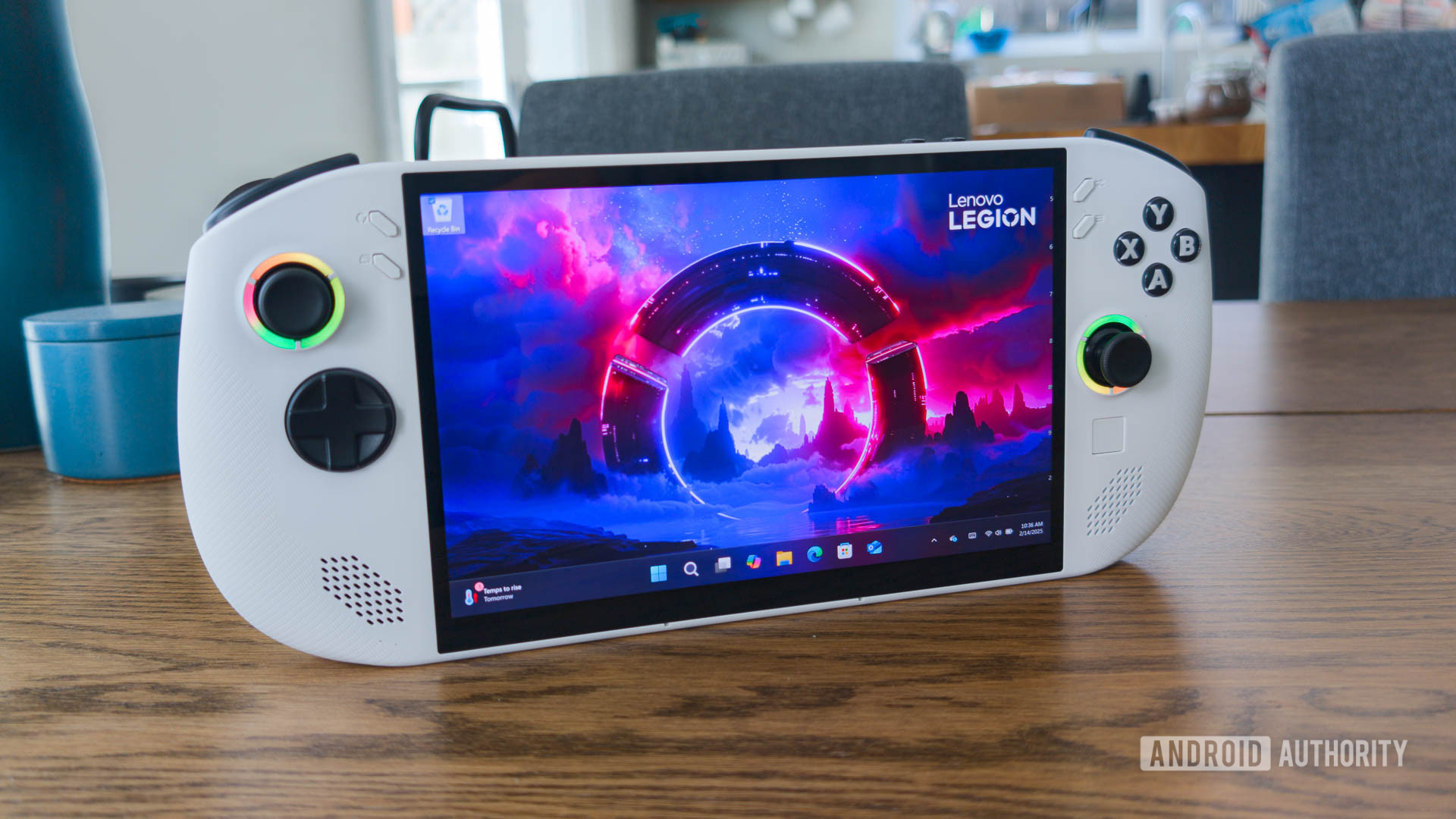
C. Scott Brown / Android Authority
Before I get into all the things wrong with the Legion Go S, I want to point out some good things, all of which relate to its design.
First, let me say that I love the look and overall feel of the Legion Go S. It abandons the Switch-like detachable controllers and kickstand of the original Lenovo Legion Go, but is far more ergonomically satisfiying as a regular handheld. The super-curvy grips with a micro-textured finish fit nicely into my palms. The analog sticks are nice and tall, with very smooth movement. The ABXY face buttons don’t feel too mushy nor too clicky, and the triggers and bumpers are large and tactile. I also really like the white colorway, even though it does make it look a whole lot like an ASUS ROG Ally.
There is a lot to love about the Legion Go S when looking at its design, buttons, sticks, and especially its 8-inch LCD panel.
The RGB lighting surrounding the sticks is also nice. You can’t control it granularly, but you can shut it off or make it one solid color. I’m an RGB puke fan myself, so I left it at full tilt rainbow.
I also truly love the display on the Legion Go S. It is a massive 8-inch LCD panel with a 16:10 aspect ratio and a resolution of 1,920 x 1,200. Its variable refresh rate (going from 48Hz to 120Hz) makes gameplay look smooth and crisp while also being pretty big for a gaming handheld. OLED would have been nice to see here, but I had no complaints about the device’s visual experience.
Thankfully, the front-facing speakers here are very loud and sound great. Granted, I assume most people will use headphones most of the time, but if you’re not, you’ll have no trouble hearing your game’s audio.
However, all this good stuff is for naught due to several flaws, with one very significant one: weight.
I found it difficult to hold the Legion Go S for long periods of time. It’s just too heavy with poor weight distribution.
The first time I ever picked up a Steam Deck, I immediately thought to myself, “Wow, I didn’t expect it to be this light.” In reality, the Steam Deck OLED (the fractionally lighter, refreshed model Valve released in late 2023) weighs about 1.41 pounds, which is actually fairly heavy — much heavier than holding any standard controller, at least. The Nintendo Switch OLED weighs less than a pound to give further comparison. The Lenovo Legion Go S, though, weighs more than a Steam Deck at 1.62 pounds and, crucially, doesn’t distribute that weight nearly as well. This results in it being uncomfortable to use the Legion Go S continuously for long gaming sessions.
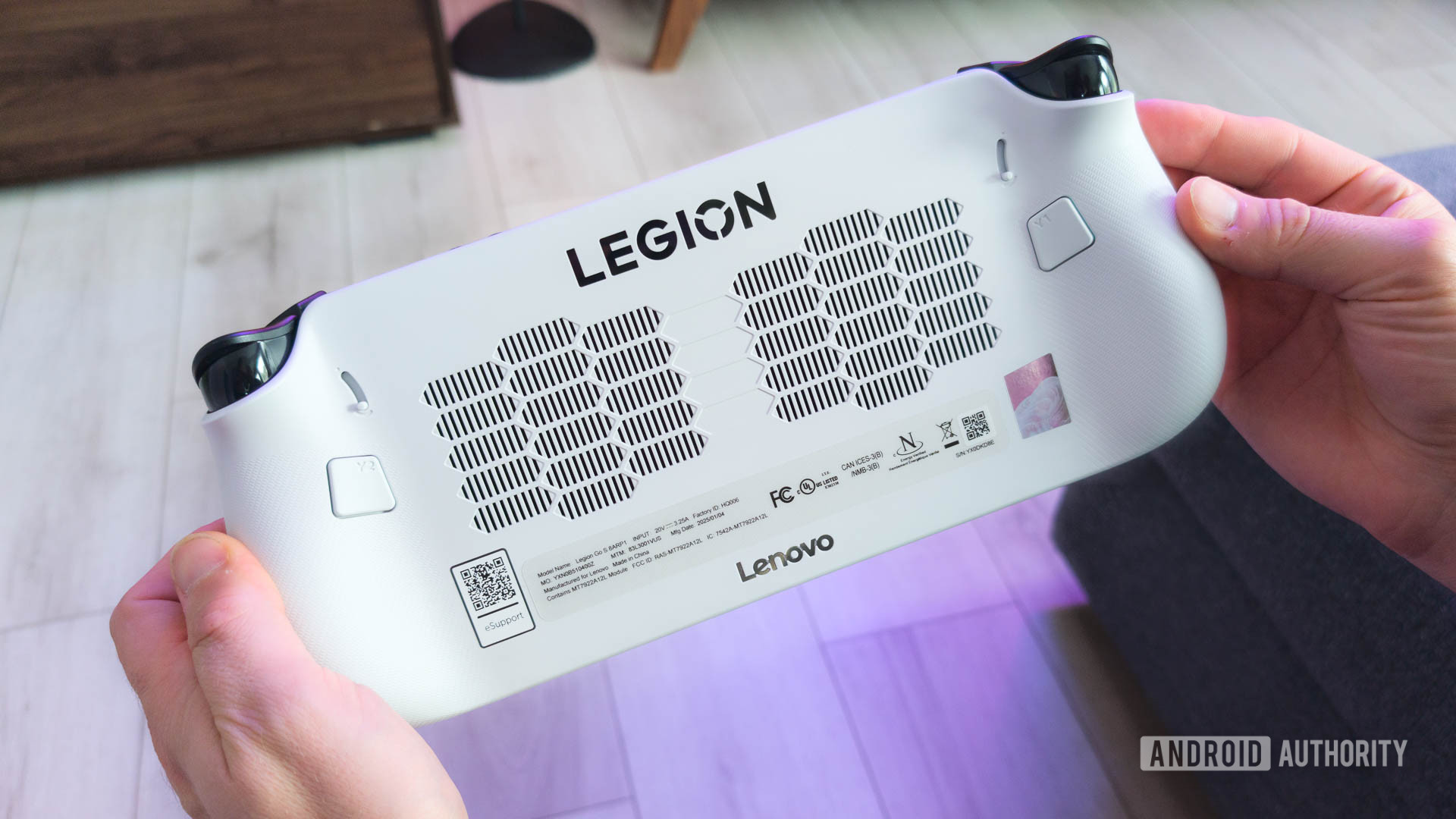
C. Scott Brown / Android Authority
Obviously, one of the biggest reasons for the success of gaming handhelds is the fact that you can bring one on a train, plane, or long car ride and play your PC games on the go. If you can’t sit there and play for more than 30 minutes without needing to give your wrists a break, what’s the point? Lenovo tried to solve this problem with the original Legion Go, which had those aforementioned Switch-like removable controllers. This allowed you to hold just the controllers and keep the heavy 8.8-inch display on a table or even your lap. That’s not the case with the Legion Go S, though. Everything is permanently attached, so you need to hold the whole thing.
Outside of the weight, Lenovo made some other baffling hardware decisions. The microSD card reader, for example, is on the bottom, making it tricky to swap your card if the device is docked. The two USB-C 4.0 ports are directly next to one another on top of the Legion Go S, which means there is barely enough room for two things to be plugged in at the same time — say, for example, a USB stick and the charging cable. Why even have two ports at all?
Lenovo did fix a mistake it made with the original Legion Go, which was putting the Start and Select buttons right next to each other on the bottom left — you know, a spot where literally no other controller puts them. With the Legion Go S, those buttons are at the top and on opposite sides of the display, as they should be, so your thumbs can access them. However, Lenovo then bungled this by putting its two custom buttons above these and separating them by mere millimeters. As you’d expect, I found myself accidentally hitting one of these Lenovo buttons instead of the Start button numerous times.
There are so many design flubs here that it’s difficult to imagine no one at Lenovo realizing it.
For the record, the button on the right (Lenovo R) launches Lenovo’s Quick Settings program, and the one on the left (Lenovo L) launches Legion Space, which compiles all your installed games, sells you new ones, and offers some other tweaks to your settings. Both programs are useful — I just hate accidentally launching one when I want to pause my game or open my inventory.
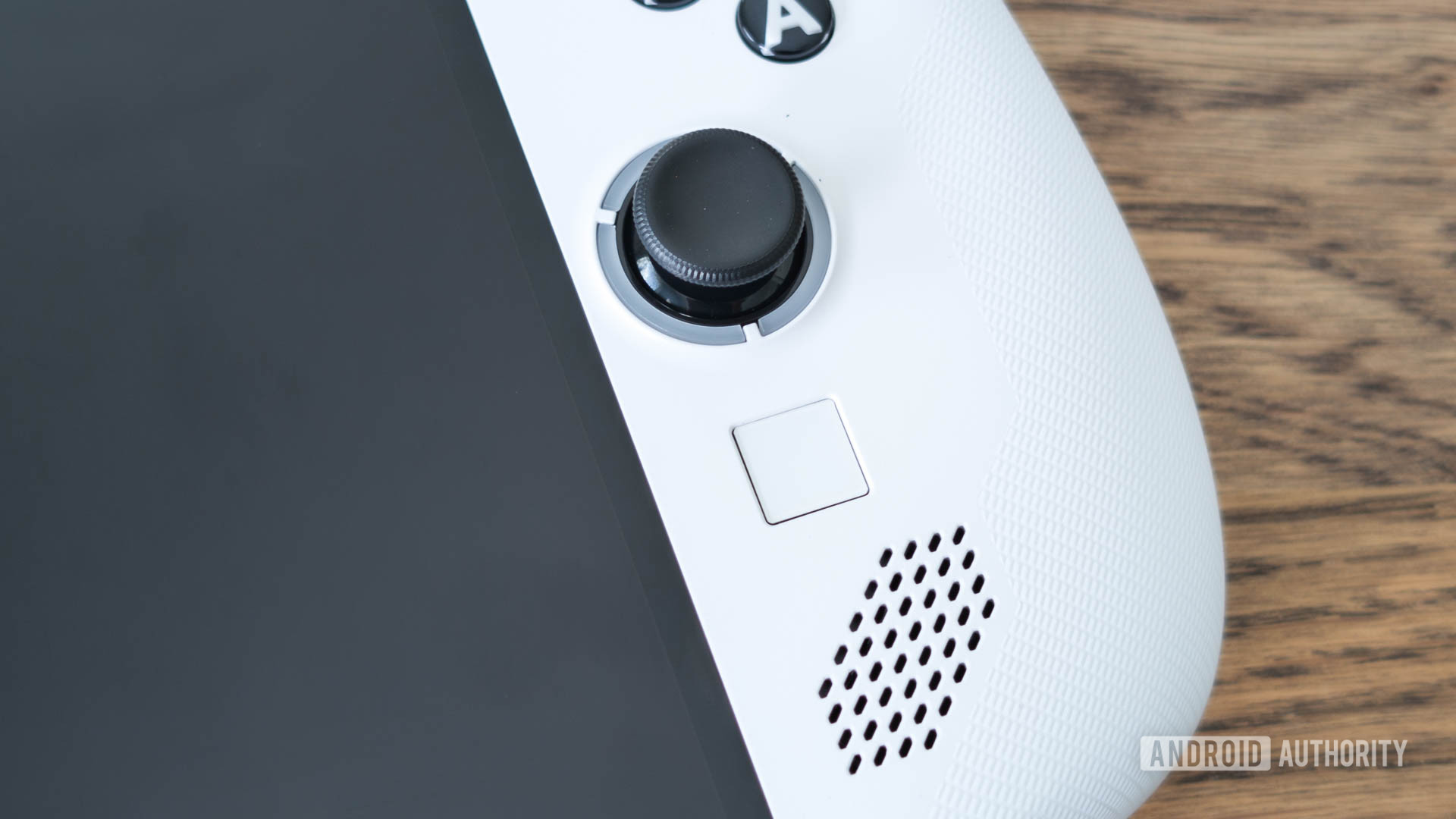
C. Scott Brown / Android Authority
Lenovo also installed one of the worst haptic motors I’ve ever experienced on any system or controller. It only works on the right side of the device, and it’s noisy. If you own a Sony DualSense, you’re accustomed to a pleasant, low-frequency hum rattling your bones across both hands. On this, it’s a shrill “bzzt” in just your right hand that feels more like an electric shock than anything else.
Finally, I must also bring up the teeny, tiny trackpad. If you can’t find it, it’s the microscopic square under the right stick. Yes, that is a trackpad for mouse movement that was designed for ants. It’s not easy to move the mouse around with it, unsurprisingly, and trying to double-click anything is a total nightmare. Also, by default, Lenovo has it set to vibrate that terrible haptic motor the entire time you’re touching the trackpad. It’s just non-stop vibrating noisily. Thankfully, you can turn this off in settings, but even then, I avoided using the trackpad as much as I could.
Software and performance: ¯\_(ツ)_/¯
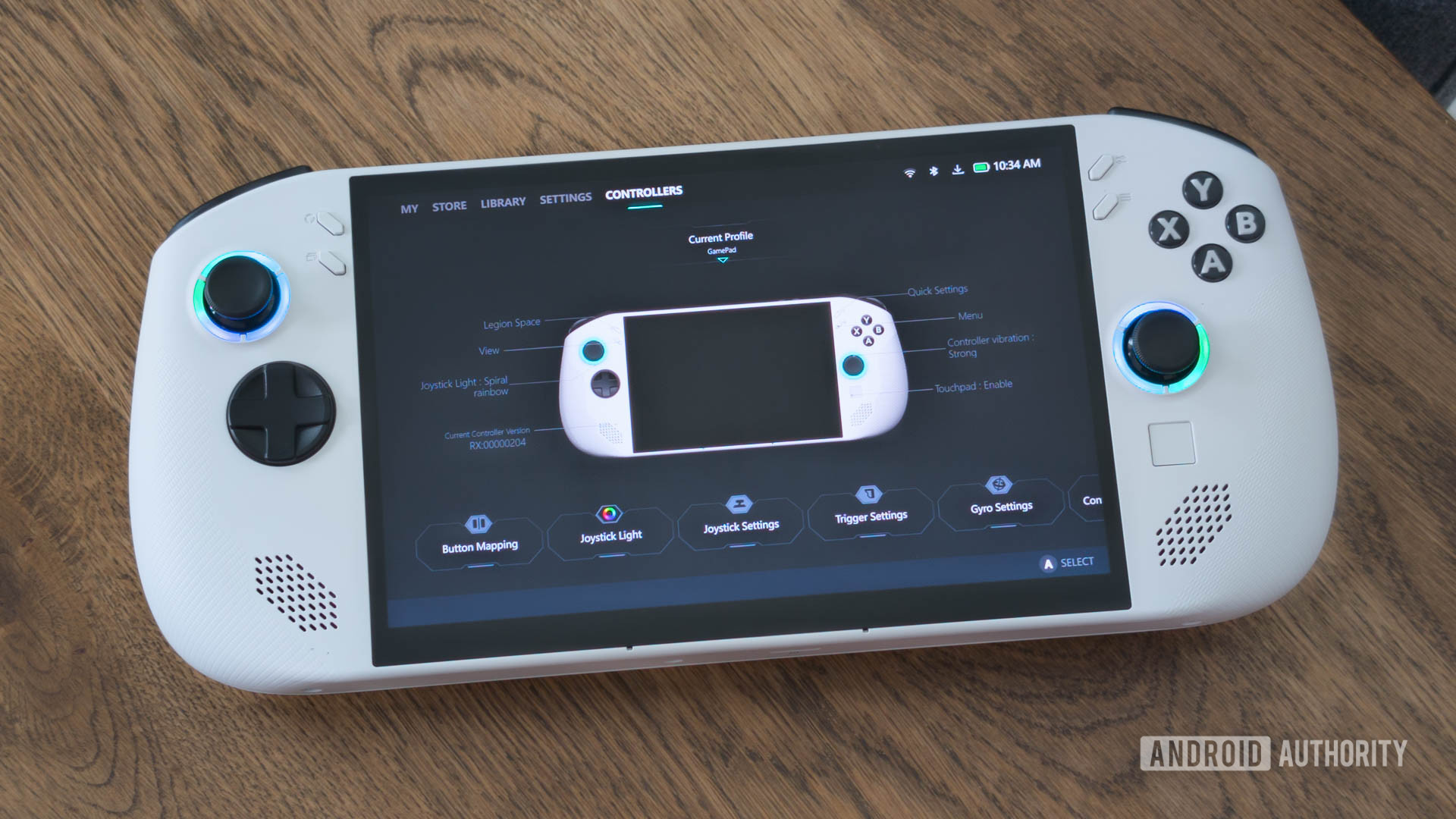
C. Scott Brown / Android Authority
I’d like to begin this section by saying that I am a big fan of Windows. I’ve always used Windows, and I have a Windows gaming rig at home, so I know it very well. I even really like Windows 11, specifically, which I know is a hot take. I also know that there are plenty of reasons someone would want Windows on a gaming handheld, with game compatibility being high on the list.
Unfortunately, Windows just isn’t integrated well on this handheld (or any handheld, really). Simple things like using the analog sticks to navigate around the operating system don’t work out of the box, for example. The on-screen keyboard doesn’t automatically pop up when you need it to. Using your fingers to accurately double-tap tiny icons is tricky, especially if you have large hands. Many programs rely on keyboard shortcuts, which you can’t perform easily on a device without a keyboard (you can’t even CTRL-ALT-DEL with the on-screen keyboard, although Lenovo does offer a shortcut macro for this purpose). Granted, you can solve many of these issues by tweaking Windows, but that’s work Lenovo should be doing, not me.
Windows on a gaming handheld is a love-it-of-hate-it thing. Yes, game compatibility is nice, but it comes at significant usability costs.
If you can look past these obstacles for the benefits Windows offers over other systems, more power to you. But I felt they needed to be mentioned.
Although Lenovo left the Windows install alone, the two programs it offers for tweaking the Legion Go S are quite useful. The Quick Settings panel — accessed at any time by hitting the Lenovo R button directly above Start — allows you to hot swap between two pre-configured modes, with one being focused on performance and the other being focused on battery. These two settings are pretty polar. The performance setting pushes most settings to the max, and the quiet setting drops them all to a bare minimum. Thankfully, there are two empty custom profiles, so you could make one yourself that’s a bit more in the middle. Once again, it would have been nice for Lenovo to create a middle-ground setting for you, but it is what it is.
Tweaking any of these settings alters how much work the processor does, so let’s jump into that. Inside the Lenovo Legion Go S is the new AMD Ryzen Z2 Go. This is the first device launched with this processor, so I can’t make an apples-to-apples comparison with it, but I can say that it is weaker than the Ryzen Z1 that appeared in the original Legion Go, ASUS ROG Ally, and a few other handhelds. It also pales in comparison to the Z1 Extreme, the top-end model in the Z1 family. This is primarily due to the Z2 Go only having four cores and eight threads.
In other words, this 2025 processor is weaker than the 2023 processors you’ll find in older and, critically, less expensive handhelds.
The AMD Ryzen Z2 Go only has four cores and eight threads, which makes it weaker than the 2023 Ryzen Z1.
If you can look past that, the Ryzen Z2 Go is fine for most purposes. With the performance setting fully throttled, I was able to enjoy 30fps gameplay in Horizon Forbidden West on medium-quality settings and the resolution set to 720p. I had a similar experience with the Resident Evil 4 remake. Lighter games, like Teenage Mutant Ninja Turtles: Shredder’s Revenge, played perfectly with a solid 60fps quality or better at 1080p. I could even drop the performance toggle to its quietest, most battery-saving setting for those kinds of games. This was nice, too, as the fans get pretty loud in performance mode.
Emulation also went well. Unsurprisingly, it can churn through emulating any system prior to the PlayStation 2. I also could emulate PS2 and PS3 games (although I needed to do some tweaks for the latter). Nintendo Switch emulation was also possible, although there was lots of stuttering, dropped frames, and other issues as I played a game that, for legal reasons, I will simply call umm… Demon King? Secret Stones?… anyway, it was still playable but not enjoyable. Other Switch titles — like one where an Italian plumber goes on an odyssey — fared much better.
Playing AAA games and emulating newer consoles is possible, but temper your expectations as far as quality goes.
I did face an issue emulating a game for the Wii U that I’ll call Amnesiac Elf Boy Helps Local Royalty with Home Repairs. I couldn’t get this game to launch at all. I did some digging and found that newer AMD drivers don’t play nice with the most popular Wii U emulator. Allegedly, you can roll back drivers to make it work, but I didn’t bother. So, if you were looking forward to emulating Amnesiac Elf Boy Helps Local Royalty with Home Repairs on your Legion Go S, you’re going to need to work for it.
The bottom line is that the Ryzen Z2 Go is OK for running games at high quality if they aren’t AAA. If they are, you’ll need to drop quality and resolution settings significantly to create an enjoyable experience. Emulating all the major consoles is possible, but it won’t be a “set it and forget it” experience as it would be on a more robust system with the Ryzen Z1 Extreme, to say nothing about something with a dGPU.
Finally, battery life is just OK. I do not have a Legion Go to test this against, but the testing I’ve done on the Legion Go S compared to tests on the Go that I’ve read online suggests battery life on the Legion Go S is about the same as what was seen on the Legion Go. This is curious because the battery cell in the Legion Go S is bigger than the one in the Legion Go: 55.5WHr vs 49.2WHr. My guess is that the Ryzen Z1 and Z1 Extreme are simply more battery efficient than the Ryzen Z2 Go because of their more advanced architectures, so the battery capacity increase is a wash. Regardless, with a AAA title like Horizon Forbidden West running in performance mode, you could eke out maybe 90 minutes of gameplay on a full battery. You could drop down quality even lower (or play less demanding titles) and get a lot more juice, but if your goal is AAA on the go, that’s what you should expect.
This isn’t great, clearly, but it would all be acceptable for a product that is not super expensive — or, at the very least, isn’t as expensive as the flagship product that came before it. With that, we now come to the final — and most damning — piece of the Lenovo Legion Go S puzzle.
Lenovo Legion Go S (Windows) review verdict: $729?! In what universe?
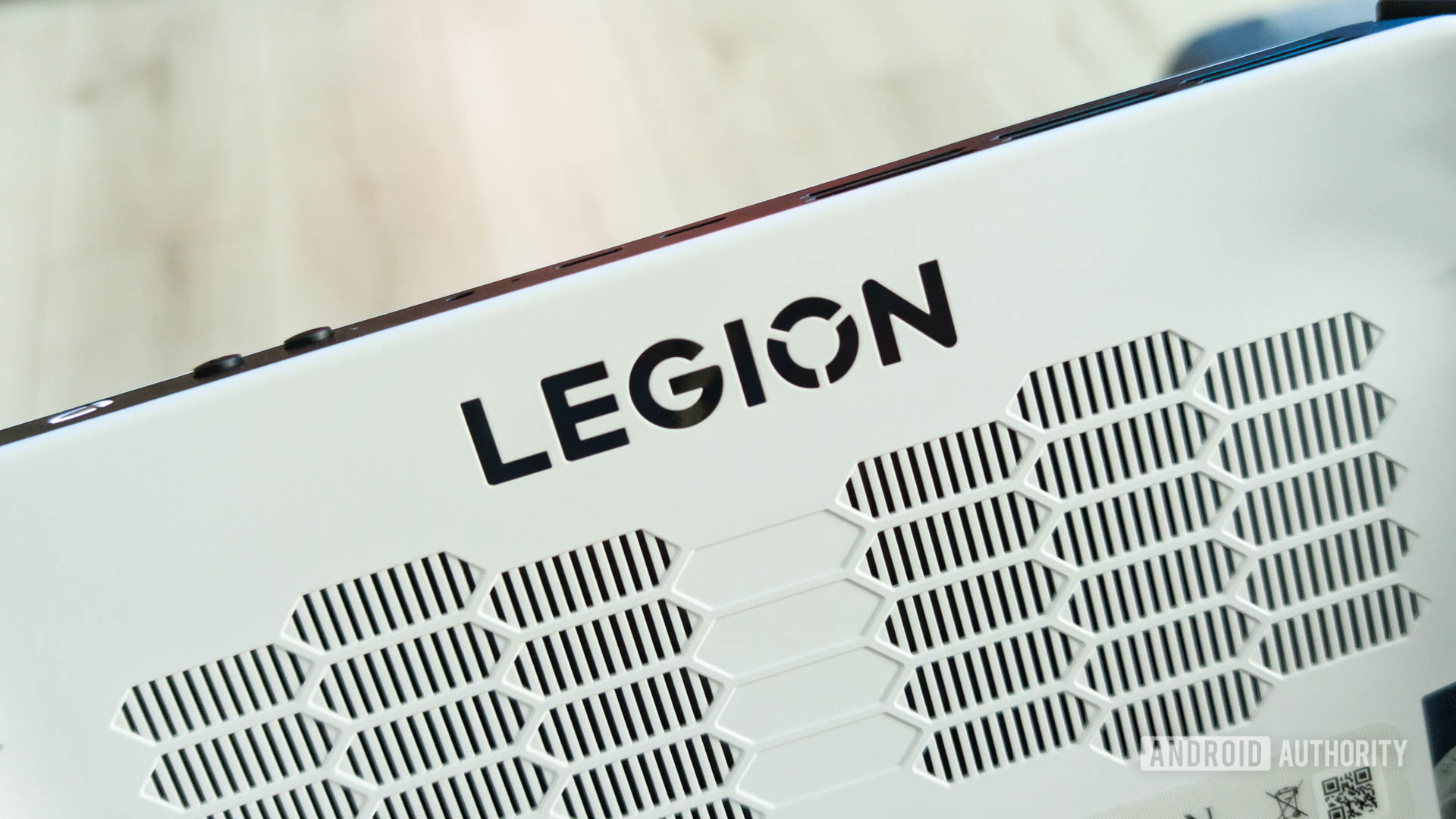
C. Scott Brown / Android Authority
Right now, you can easily get the original Lenovo Legion Go ($599.99 at Amazon) for under $700 new or even less if you go used. That device has a more powerful processor and a larger display at a higher resolution. It also has removable controllers, allowing you to comfortably game for extended sessions without holding the whole thing.
If you wanted to go even lower, you could get an ASUS ROG Ally ($449.99 at Best Buy) for under $600. Once again, that comes with a better processor. The ROG Ally X ($799.99 at Best Buy) is also worth a look, although it might cost you a bit more.
Not only are there better products out there than the Legion Go S, those superior products are less expensive.
And, of course, there’s the Steam Deck OLED ($549 at Manufacturer site) which starts at $549, brand new and without any discounts. That won’t have the same game compatibility as a Windows-based handheld, but as I mentioned at the top of this review, it is the gold standard due to Steam OS being so user-friendly, and the incredible support Valve and the Steam Deck community provides.
With all this in mind, in what universe does Lenovo think that selling the Legion Go S for $729 is a good idea? It simply isn’t worth that much money. It should be hundreds of dollars cheaper than the Legion Go when you consider the downgrades in both specs and hardware. It definitely shouldn’t be more expensive than a Steam Deck OLED. But it is — nearly $200 more expensive.

Lenovo Legion Go S with Windows
Large display • Nice software tweaks • Wide game compatibility • Loud speakers
A gaming handheld with the Ryzen Z2 Go processor and a big 8-inch display
Usually, this is where I would say, “Wait for this to go on sale and buy it then.” But I can’t say that because we know that the Legion Go 2 is coming later this year after it was revealed at CES 2025. It will have the full-flavor Ryzen Z2 and Ryzen Z2 Extreme processors that will blow the Ryzen Z2 Go out of the water. It will also have a larger battery and those removable controllers. We don’t know how much it will cost, but the original started at $699. Even if Lenovo significantly increases the price to something like $799 or higher, it still will be a better buy than the Legion Go S.
We also know the Steam OS version of this handheld is coming soon and will be significantly cheaper at $499. Yes, Steam OS lacks the full compatibility of Windows when it comes to gaming, but millions of Steam Deck fans seem to be OK with that. Even the emulation scene has figured out ways to emulate most consoles on a Deck, to the point where it’s become something of a tinkerer’s handheld of choice.
If you can’t wait around for the Steam OS-powered Legion Go S, a maxed-out Steam Deck OLED with 1TB of storage is $649 right now — still cheaper than this.
By the time the Legion Go S gets discounted to a more reasonable price, there will be new devices with better processors for the same price or less.
In other words, no matter how you approach it, the Legion Go S isn’t worth its $729 price, and by the time it drops down significantly, its competition will be a better buy. It would need to drop by over 30% right now to get to the $500 mark for it to be even a consideration. Even then, the LCD version of the Steam Deck might still be the better choice, and that starts at $399. Lenovo simply can’t go that low — not unless there’s a fire sale.
But even if you could look past all this — if money were literally no object to you — there’s nothing special about the Legion Go S. There’s nothing about it that it does much differently or better than any other gaming handheld. In some cases, the things it does do differently actually make the product worse, such as that laughably small trackpad or the awkward port placement.
So, in the end, I can’t recommend this to anyone. If you want a Windows-based gaming handheld, there are plenty of other options that will be both less expensive and offer you a better experience. If you don’t care if it has Windows or not, any flavor of the Steam Deck will be significantly cheaper and better overall. And, if you just want gaming portability, there are dozens of budget gaming laptops — even some from Lenovo! — that will be the same price or less with much better performance thanks to them having a dGPU.
Ignore the Legion Go S with Windows 11 — it’s just not worth it. Here’s hoping the Steam version isn’t such a disappointment.


